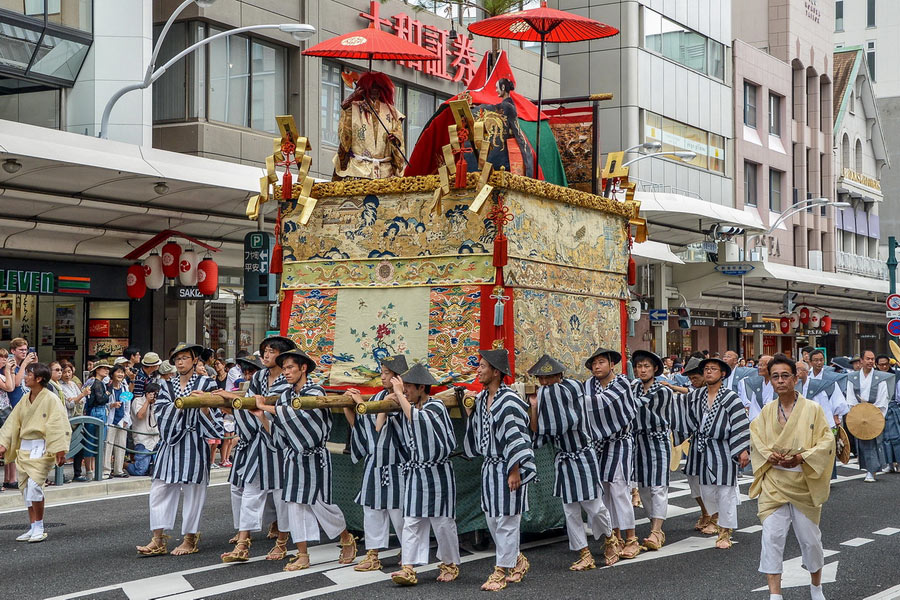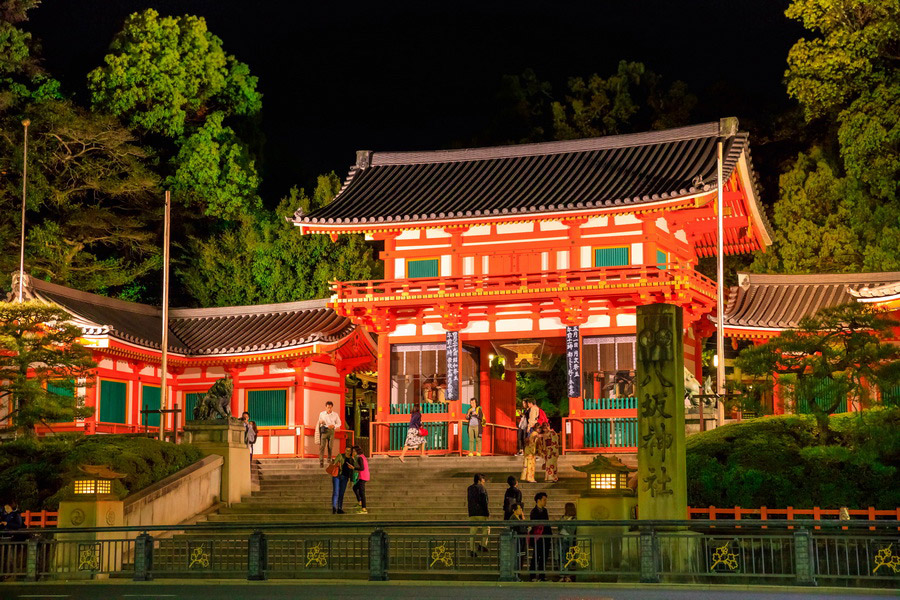
Gion Matsuri (祇園祭) is the largest and oldest Japanese festival, celebrated annually in Kyoto during the month of July. Associated with the Yasaka Shrine, this festival is not only an important cultural event in Japan but also a unique opportunity for tourists to witness traditional Japanese rituals, culture, and art.
History of the Festival
The Gion Festival dates back to 869. At the time, Japan was facing epidemics that claimed thousands of lives and plunged the country into an economic crisis. In an effort to stop the diseases and gain the support of the gods, the politician Fujiwara no Mototsune demolished his house and ordered the construction of a Buddhist temple dedicated to the deity Gozu Tennō, who was believed to ward off disease. This deity was later identified with the god Susanoo-no-Mikoto, and the temple became part of the Gion-jinja, now known as Yasaka-jinja.
To appease the gods and ward off evil forces, a ritual involving 66 halberds - one for each prefecture of Japan at the time - was performed by the emperor in the imperial garden at Shinsen-en. In addition, a mikoshi (sacred palanquin, the abode of the gods) was carried from Gionsha (the former name of Gion's Yasaka shrine) through the streets of the city for the same purpose: to seek the gods' salvation. The festival has been held annually since 970 and has grown into a complex and large-scale event.
Festival in the Edo Period
It was during the Edo period (1603-1868) that the Gion Matsuri evolved into its final form. This development reflected the cultural and economic prosperity of Kyoto, then the centre of Japanese arts and crafts. Merchants financed the construction of the festival floats by importing fabrics and materials from China, India, and other countries, giving the floats a distinctive appearance.
It was also at this time that the tradition of parading the floats in two stages was established: Saki Matsuri (17 July) and Ato Matsuri (24 July). This timing is still observed today, with each part of the procession accompanied by various rituals and activities.

The Main Events of the Festival
Gion Matsuri is not just a procession of dashi floats (decorated platforms); it encompasses a wide range of events that take place throughout the month. The main activities take place in mid-July and culminate in two major parades.
Yamahoko Junko - Float Procession
The most iconic event of the festival is the Yamahoko Junko Procession. The floats are divided into two types: yama and hoko.
Yama are wooden floats weighing up to 1,6 tonne, carried by a team of porters. They are decorated with umbrellas and sculptures of historical figures.
Hoko (floats symbolising halberds) are much larger floats, reaching heights of up to 25 metres and weighing up to 12 tonnes. They are decorated with antique tapestries and fabrics. On their roofs, performers conduct rituals, dance, play music characteristic of each hoko, and toss chimaki (bamboo talismans) to promote health and well-being.
The procession takes place twice in the month.
- Saki Matsuri: This major procession, dedicated to welcoming the deities of Yasaka Shrine, takes place on the 17th of July. Streets in the Karasuma and Shijo districts begin to be blocked off for the event as early as the 13th, allowing residents to walk around and view the floats that will be part of the procession until the 16th.
- Ato Matsuri: The second procession, slightly smaller in scale, takes place on 24 July. This phase of the festival symbolises the ritual of bidding farewell to the deities before their return to the Yasaka Shrine. Although there are fewer floats in this procession, it retains its traditional identity.
Rituals at the Yasaka Shrine

A month before the festival, on 11 June, the Yasaka Shrine hosts an initiation ritual for the role of the chigo “sacred child”, a servant boy responsible for communicating with the gods during the procession. The chigo is carefully selected from wealthy families. Throughout the festival, the shrine also hosts various purification and worship rituals to appease the gods and protect the city.
Yoiyama - Night Festival Events
On the nights before the parades (14 to 16 July and 21 to 23 July), Kyoto hosts the festive events known as Yoiyama. During this time, the streets of the city are closed to motorised traffic, creating a vibrant and festive atmosphere.
Residents and tourists alike stroll through the lantern-lit streets and have the opportunity to get a close look at the yamahoko floats. Many of these floats have their own pavilions displaying the unique artwork used in their decoration. Visitors can also purchase souvenirs, Japanese street food, and drinks during these lively nights.
In addition to being a religious ceremony, Gion Matsuri is a major cultural event that attracts tourists from all over the world. Throughout the month of July, Kyoto is transformed into a hub of Japanese culture, where ancient and modern traditions coexist beautifully. The festival fosters cultural ties because many of the families involved in creating the floats have passed on their skills from generation to generation. It also contributes significantly to the preservation of Japan's national identity and traditions. With hundreds of thousands of visitors each year, Gion Matsuri is one of the most visited festivals in Japan.

